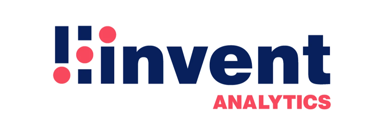
What is a Backfill Position, and Why Is It Important? How HR Can Apply?
Did you know that employee absenteeism costs employers a whopping $84 billion annually? 😲 That's right! This staggering number is exactly why backfill positions have become super critical in today's workforce management.
Throughout this guide, we'll break down everything you need to know about backfill positions - from what they actually are to why they matter so much for your company's success. So, let's dive in and get you equipped with everything you need to know! 🚀

What is a Backfill Position? Understanding the Core Meaning
Let's face it - workplaces constantly deal with unexpected gaps when team members move on, take extended leave, or jump to new roles within the company.
A backfill position is essentially a temporary or permanent role created specifically to cover for an employee who can't perform their regular duties. 🔄
Definition and scope of backfill positions
Think of backfill positions as your workplace continuity plan in action. They keep everything running smoothly when someone is absent, promoted, or leaves your organization.
The scope goes way beyond simple replacement. This approach helps companies avoid the risks associated with sudden staffing changes and prevents daily operations from falling apart.
Backfill vs replacement: Key differences
People often mix these terms up, but they're actually quite different approaches to handling vacant positions:

Here's a handy way to remember it: you backfill a position but replace an employee. Simple, right? 👍
Types of situations requiring backfilling
A quick exercise: Think about your workplace over the past year. How many of these situations have you encountered?
- Temporary absences: When employees go on parental leave, medical leave, jury duty, or military service. These create temporary gaps that absolutely need coverage.
- Internal movement: Someone gets promoted or transfers to another department. Their previous position needs backfilling to keep things running smoothly.
- Extended vacations or sabbaticals: Longer absences for personal development or rest can leave big gaps in your operations.
- Sudden departures: Those unplanned resignations or terminations that require immediate action to prevent work piling up and other team members getting overwhelmed.
Backfilling serves two important purposes - it's both your emergency response plan and your proactive approach to workforce management.
It helps your organization stay stable even when people inevitably come and go. That's definitely not a small thing in today's dynamic workplace! 🏢

The Strategic Importance of Backfill Positions in Organizations
Backfill positions are way more than just filling empty chairs with warm bodies. For organizations that think ahead, they're actually strategic assets.
When done right, backfilling becomes a powerful tool that keeps business momentum going and protects your organization's overall health. 💪
Maintaining operational continuity
Backfilling gives you immediate coverage for critical tasks that simply can't wait. Without this continuity, your business risks falling behind on deliverables and losing its competitive edge, especially in fast-moving markets where every day counts.
Preserving institutional knowledge
Here's something we all know but rarely talk about: when a long-term employee walks out the door, they take a huge amount of company-specific insights – what the experts call "institutional knowledge." This isn't just about technical skills - it's about understanding company culture, processes, relationships, and all those unwritten rules that make things work.
Think about it - how much faster would your new hires get up to speed if this knowledge was properly passed down? 🤔
Protecting team morale and productivity
Research shows that backfilling positions promptly shows your team you care about their well-being, which creates a much more positive working environment. No one wants their best people quitting because they've been covering three jobs for months!
Financial implications of effective backfilling
Did you know the cost of employee turnover averages $4,969 per employee? That makes prompt backfilling not just nice to have but a financial must-do!
But here's the bottom line - investing in proper backfilling typically pays for itself through maintained productivity, preserved knowledge, and stronger team cohesion. Win-win! 🏆
Common Challenges in Backfill Position Management
Let's be honest - managing backfill positions can be a real headache for HR departments. 😩 Even organizations with rock-solid structures struggle with this!
The pressure to keep operations running smoothly while dealing with these challenges requires some serious strategic thinking and careful planning.
Justifying backfill positions to leadership
Ever tried convincing your leadership team to approve a backfill position? It's like trying to sell ice to penguins sometimes! Leadership often pushes back due to concerns about redundancies and budget impacts.
Plus, leadership loves to ask those tough questions: "Do we really need to backfill this position? Can't we just spread these responsibilities among the existing team?"
This puts HR in a tricky spot—you need to prove the immediate operational necessity while also showing the long-term value of your backfill investment. It's not exactly a walk in the park!
Finding qualified candidates quickly
The rush to fill positions often messes with the quality of your recruitment process. 62.6% of employers say that getting flooded with unqualified applicants is their biggest challenge when recruiting online. Finding good talent quickly? That's getting harder and harder!
Knowledge transfer hurdles
Knowledge transfer is that critical piece everyone seems to forget about until it's too late! 🤦♀️ When people leave suddenly, organizations scramble to make sure essential knowledge and skills don't walk out the door with them.
Critical institutional knowledge can be lost forever Without enough overlap between the outgoing and incoming employees. Think about all those little tricks, shortcuts, and relationship nuances that make things work smoothly - gone!
Budget constraints and timing issues
Money talks - and financial limitations create major barriers to effective backfilling. Those unfilled positions generate unexpected overtime expenses that wreak havoc on payroll budgets.
The timing of backfills puts you in a classic catch-22 situation – wait too long and productivity tanks; rush the process and risk making expensive hiring mistakes. This timing dilemma becomes super critical when you're backfilling positions that directly impact your revenue or customer satisfaction.
Bottom line? Backfill management isn't for the faint of heart. But with the right approach, these challenges can be overcome. And trust me, the effort is worth it! 💯

How HR Can Develop an Effective Backfill Strategy
Shifting from reactive firefighting to proactive workforce planning is the secret sauce for a solid backfill strategy.
With some thoughtful preparation, your organization can keep things running smoothly even when key people move on or take leave. Let me walk you through how to make this happen! 🧠
Creating a proactive backfill planning framework
This forward-thinking approach helps HR spot patterns and predict staffing changes before positions actually become vacant. Think of it like weather forecasting - you can't stop the rain, but you can definitely bring an umbrella if you know it's coming!
Building internal talent pipelines
Implementing mentorship programs helps pass down experience and knowledge to junior staff, building their confidence and readiness for bigger responsibilities. Did you know that companies with a skills-focused culture are 63% more likely to surpass key workforce goals?
Developing backfill position documentation templates
Documentation might sound boring, but it's absolutely the backbone of successful backfilling:
- Create detailed job descriptions that outline key responsibilities and essential skills for each critical role
- Establish clear procedures for knowledge transfer between outgoing and incoming employees
- Design standardized templates for capturing institutional knowledge
Having these ready to go is like having the instruction manual before you need to build the furniture - it saves tremendous time and headaches later!
Implementing cross-training programs for critical roles
Cross-training is your insurance policy against knowledge loss. It significantly boosts your organization's resilience by spreading critical knowledge throughout the team. This practice helps preserve institutional knowledge even through inevitable staff changes.
Leveraging technology for backfill management
Modern HR technology streamlines the entire backfill process through automation and improved tracking. Digital tools help manage job descriptions, track employee movements, and facilitate efficient hiring.

Conclusion
Backfill positions aren't just nice-to-haves in today's workplace - they're absolute must-haves for modern workforce management! 🔑 They directly impact everything from how efficiently your teams operate to the overall vibe of your workplace.
Organizations that get backfill strategies right enjoy huge advantages through steady productivity, preserved company knowledge, and teams that stick together. The secret sauce? Preparation and thinking ahead. 💪
Contents
Get a demo
- Quickly find top candidates with smart application management
- Improve team collaboration using built-in communication and workflows
- Offer a smooth candidate experience to strengthen your employer brand
- Count on 24/7 support for a hassle-free hiring process
- Quickly find top candidates with smart application management
- Improve team collaboration using built-in communication and workflows
- Offer a smooth candidate experience to strengthen your employer brand
- Count on 24/7 support for a hassle-free hiring process
"We truly felt the speed difference. Everything was smoother, and candidate feedback was much more positive. It made our jobs easier."

Trusted by 100+ teams
Suggested Blog Posts

40+ Employee Wellness Statistics

12 Employee Engagement Statistics to Track in 2026
















